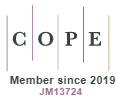Sustainable Concrete by Partially Replacing Coarse Aggregate Using Coconut Shell
DOI:
https://doi.org/10.15415/jotitt.2014.21004Keywords:
Crushed coconut shell, Compressive strength, slit tensile strength, flexural strength, Carbon emulsion, Coconut shell concreteAbstract
A common feature of sustainable buildings is that they drastically reduce emissions, material use and water use and with involvement of economic vitality, environmental, health, and social equity in it. As a whole, the study main concern is the environment and the construction and building technology to enhance natural world as well as building materials. In view to provide new knowledge to the contractors and developers on how to improve the construction industry methods and services by using coconut shells and to sustain good product performance and meet recycling goals, there is need to design a technical specification of concrete using coconut shell as aggregates that will meet the Indian standard requirements in order to help contribute to the industry in saving the environment, to encourage the government to find solutions regarding the disposal to landfills of waste materials and save the environment. The use of coconut by products has been a long time source of income for some people. Recycling of the disposed material is one method of treating the agricultural waste. The used of coconut shell could be a valuable substitute in the formation of composite material that can be used as a housing construction,such as concrete.
Downloads
References
[2] Amarnathyerramala. Volume 1, October (2012), “Properties of concrete with coconut shells as aggregate replacement”.
[3] Daniel Yaw Osei. Volume 2, 5, May (2013), “Experimental assessment on coconut shells as aggregate in concrete”.
[4] Gambhir, M. L., (2004).Concrete Technology. 3rd Ed. The McGraw-Hill companies pp-658.
[5] Gopal Charan Behera. Volume. 2, 6, June (2013), “Effect of coconut shell aggregate on normal strength concrete”.
[6] Javed Ahmad Bhat. Volume. 7, 9, September (2012), “Machine crushed animal bones as partial replacement of coarse aggregates in lightweight concrete”.
[7] K. Gunasekaran, P.S.Kumar, —lightweight concrete mix design using coconut shell aggregate Proceedings of International Conference on Advances in Concrete and Construction, ICACC-2008, 7-9 February 2008, Hyderabad, India pp. 450-459.
[8] K. Gunasekaran, P.S. Kumar, —Lightweight Concrete Using Coconut Shells as Aggregate Proceedings of the International Conference on “Innovations in Building Materials, Structural Designs and Construction Practices (IBMSDCP-2008), 15-17 May 2008, pp. 375-382
[9] M.L.V. Prasad, P. Ratish Kumar, –Properties of Recycled Aggregates. National Conference on ‘Materials and Structures, December 14-15, 2007 at NIT Warangal, A.P. (INDIA) pp. 185-192.
[10] Maninder Kaur. Volume.7, (2012), “A review on utilization of coconut shell as coarse aggregate in mass concrete”.
[11] Mansur, M. A.; Islam, M. M.; (2002). Interpretation of Concrete Strength for Nonstandard Specimens. ASCE journal of materials in civil engineering, March-April, 151-155. http://dx.doi.org/10.1061/ (ASCE)0899-1561(2002)14:2(151)
[12] Neville, A. M., (1997). Properties of concrete. 4th ELBS edition, Longman Publishing Company, UK
[13] Olanipekun E.A. (2006) et al, –A comparative study of concrete properties using coconut shell and palm kernel shell as coarse aggregates, International Journal of Building and Environment 41(2006), pp. 297–301. http://dx.doi.org/10.1016/j.buildenv.2005.01.029
[14] Saravanan R, Sivaraja M. Durability studies on coir reinforced bio-composite concrete panel. Eur J Sci Res 2012;81(2):220–30.
[15] Rashid, M. A.; Mansur, M. A.; Paramsivam, P., (2002). Correlations between mechanical Properties of high strength concrete. Journal of Materials in Civil Engineering, May-June, 230-238. http://dx.doi.org/10.1061/(ASCE)0899-1561(2002)14:3(230)
[16] Vishwas P. Kukarni. Volume 2, 12, June (2013), “Comparative study on coconut shell aggregate with conventional concrete”. IS: 10262-1982: –Recommended guide lines for Concrete Mix Design. Bureau of Indian Standard, Manak Bhavan, Bahadurshah Zafar Marg, New Delhi, 1982. IS: 12269-1987: –Specification for 53 Grade ordinary Portland cement. Bureau of Indian Standard, Manak Bhavan, Bahadurshah Zafar Marg, New Delhi, 198
Downloads
Published
How to Cite
Issue
Section
License
Articles in Journal on Today's Ideas - Tomorrow's Technologies (J. Today’s Ideas - Tomorrow’s Technol.) by Chitkara University Publications are Open Access articles that are published with licensed under a Creative Commons Attribution- CC-BY 4.0 International License. Based on a work at https://jotitt.chitkara.edu.in. This license permits one to use, remix, tweak and reproduction in any medium, even commercially provided one give credit for the original creation.
View Legal Code of the above mentioned license, https://creativecommons.org/licenses/by/4.0/legalcode
View Licence Deed here https://creativecommons.org/licenses/by/4.0/
 |
Journal on Today's Ideas - Tomorrow's Technologies by Chitkara University Publications is licensed under a Creative Commons Attribution 4.0 International License. Based on a work at https://jotitt.chitkara.edu.in |











